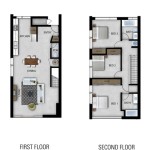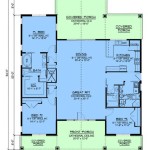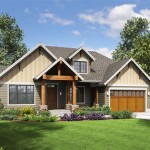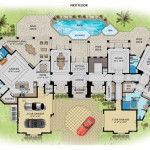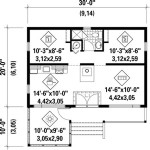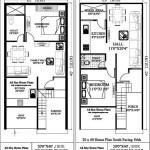Studio Apartment Design Floor Plan
Studio apartments are a popular choice for city dwellers who value convenience and affordability. With their compact size, these apartments offer a unique opportunity to create a functional and stylish living space. When designing a studio apartment floor plan, there are several key factors to consider to maximize space utilization and create a comfortable and inviting environment.
1. Define Functional Zones: The first step in designing a studio apartment floor plan is to define the different functional zones. This includes the sleeping area, living space, kitchen, and bathroom. Consider the size and shape of the apartment and allocate space accordingly. Create a clear distinction between each zone to ensure a sense of separation and privacy.
2. Utilize Vertical Space: Studio apartments often have limited floor space, making it essential to utilize vertical space effectively. Built-in storage units, shelves, and loft beds can help maximize vertical space. Consider installing floating shelves, wall-mounted cabinetry, and utilizing the height of your walls to create additional storage and display areas.
3. Choose Multifunctional Furniture: Multifunctional furniture is a smart solution for studio apartments. Opt for pieces that serve multiple purposes, such as a sofa bed that can be used as both a seating area and a sleeping space. Ottomans with built-in storage, coffee tables with drawers, and dining tables that can be converted into desks can help save space and provide additional functionality.
4. Maximize Natural Light: Natural light makes any space feel larger and more inviting. In a studio apartment, it is crucial to maximize natural light by placing windows strategically and utilizing reflective surfaces. Use sheer curtains or blinds to allow light to filter in while maintaining privacy. Mirrors placed opposite windows or on adjacent walls can reflect light and create the illusion of a larger space.
5. Create a Focal Point: A focal point can help draw the eye to a specific area of the room and create a sense of balance. In a studio apartment, this could be a fireplace, a large piece of art, or a striking light fixture. By creating a focal point, you can distract from the lack of separate rooms and add visual interest to the space.
6. Incorporate Storage Solutions: Storage is key in a studio apartment to avoid clutter and maintain a sense of organization. Utilize every available nook and cranny by installing shelves, drawers, and baskets. Consider under-bed storage, built-in cabinets, and over-the-door organizers to maximize storage capacity.
7. Use Color and Texture: Color and texture can be powerful tools in creating a visually appealing and comfortable studio apartment. Light colors and reflective surfaces make spaces feel larger, while darker tones and matte finishes can create a cozy and intimate atmosphere. Experiment with different textures to add depth and interest, such as textiles, wood, and metallic accents.
Designing a studio apartment floor plan requires careful planning and creativity. By considering the principles outlined above, you can create a functional, stylish, and comfortable living space that maximizes space utilization and enhances your everyday life. Remember to prioritize your own needs and preferences to create a space that truly reflects your style and personality.

Studio Apartment Plan Examples

Studio Apartment Floor Plans Small

Studio Apartment Floor Plans Examples Key Considerations Cedreo

Studio Apartment Plan Examples

Studio Apartment Floor Plans

Studio Apartment Floor Plans Examples Key Considerations Cedreo
:strip_icc()/cdn.cliqueinc.com__cache__posts__209346__how-to-lay-out-a-studio-apartment-and-have-room-to-spare-1989066-1479848042.700x0c-bdc9dbe29c1b41da9e87868b51881e72.jpg?strip=all)
One Studio Apartment 4 Ways Follow Our Stylish Guide

Studio Apartment Layout In 2024 Floor Plans

10 Ways To Get The Most From Studio Apartment Floor Plans Décor Aid

5 Economic Studio Apartment Layout Plans House Design 3d

